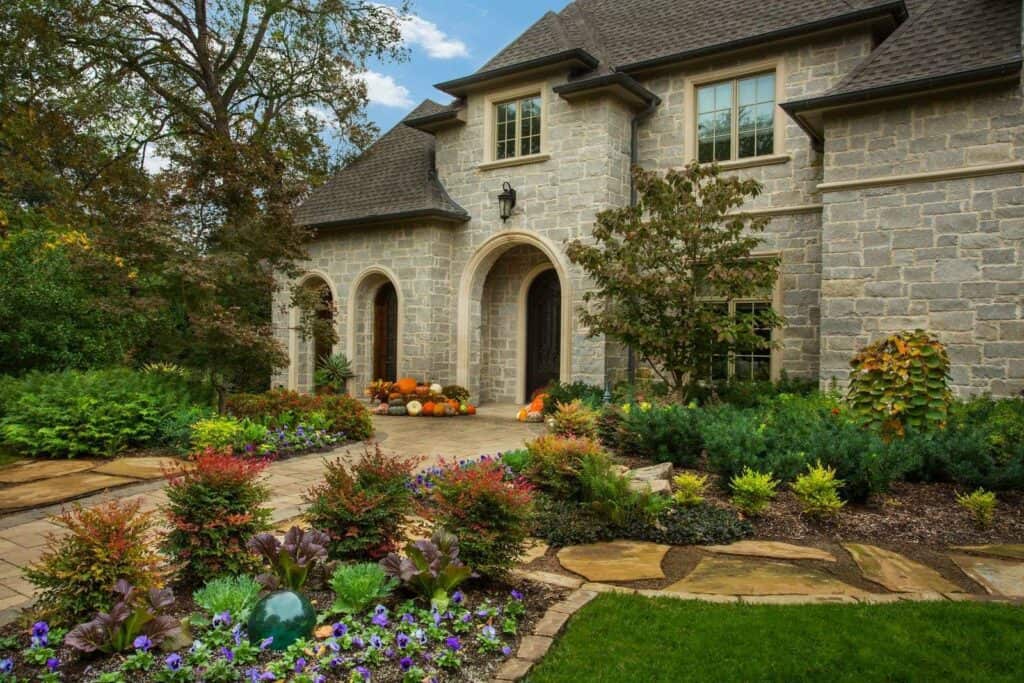The 45-Second Trick For Landscape Design
The 45-Second Trick For Landscape Design
Blog Article
Landscape Design Things To Know Before You Buy
Table of ContentsThe Basic Principles Of Landscape Design Unknown Facts About Landscape DesignThe Greatest Guide To Landscape DesignWhat Does Landscape Design Do?
When designing a household landscape, the most crucial action is to place an intend on paper. Developing a master strategy will certainly conserve you money and time and is much more most likely to cause a successful style. A plan of attack is developed through the 'layout process': a detailed approach that thinks about the ecological problems, your wishes, and the components and principles of layout.The 5 actions of the design process consist of: 1) conducting a site inventory and analysis, 2) establishing your needs, 3) creating practical representations, 4) creating conceptual layout strategies, and 5) attracting a last style plan. The very first three steps establish the aesthetic, functional, and horticultural requirements for the style. The last 2 actions after that apply those requirements to the production of the last landscape strategy.
This is a crucial step for both plant selection and placement and situating family members tasks and functions. It is essential due to the fact that the exact same environment problems that influence the plantstemperature, moisture, rain, wind, and sunlightalso impact you, the individual. The next action is to make a checklist of your demands and desiresthis helps you identify how your lawn and landscape will certainly be made use of.
The functional diagram is then made use of to situate the activity spaces on the website and from this representation a conceptual plan is developed. The last step is a last design that includes all the hardscape and growing details that are necessary for installation. Throughout the style process there are 10 essential points to think about: for plant selection and task location by considering what you desire and need to aid establish forms and organize areas by designating task areas and relating to components for both the setting and the user by using massing and layering techniques such as change areas and centerpieces in the products, the colors, and the surface area textures for the development and maintenance of plants by utilizing sustainable layout techniques A comprehensive inventory and evaluation of the website is crucial to determine the ecological conditions for plant development and the very best use the site.
The 9-Minute Rule for Landscape Design
The sort of dirt figures out the nutrients and dampness offered to the plants. It is constantly best to use plants that will certainly grow in the existing soil. Although dirt reference can be changed, amendment is usually costly and a lot of times inefficient. Existing plants can give hints to the dirt kind. Where plants expand well, keep in mind the soil problems and make use of plants with comparable expanding requirements.

Sun/shade patterns, the amount and size of exposure to sunlight or shade (Number 1), develop microclimates (often called microhabitats) - Landscape Design. Recording website problems and existing greenery on a base map will reveal the area of microclimates in the yard. Plants normally come under one or 2 of 4 microclimate categories-full sunlight, partial color, color, article and deep color
The Single Strategy To Use For Landscape Design
Number 1. Sunlight and shade patterns. Credit: Gail Hansen, UF/IFAS It is important to keep in mind all the existing problems on an accurate base map when doing the website inventory (Figure 2). Energies such as power lines, septic systems, underground energies and roofing system overhangs determine plant place. Use a property surveyor's plat navigate to this site of your residential property for the boundaries and area of your home.


Determine the time and cash you are eager to put into preserving the plants and hardscape-be sensible regarding your objectives and capability. Suggested use locations. Credit Score: Gail Hansen, UF/IFAS There are several various landscape style styles- from easy to complex, yet it is handy to select one to direct your plant and material option.
Many individuals find it helpful to search in horticulture publications and books for concepts. This is a good start, yet be mindful that the yards in the images were selected due to the fact that they are outstanding instances. Consider the images with a critical eye to collect concepts that you can adjust to your interest level, your budget and your site.
Determine if you intend to open your backyard, close your backyard, or a little of both, to these views (Landscape Design). To put it simply, do you desire the yard to confine the space around you and relate mostly to the home, or do you want the yard to open sights and look outside, connecting to the environments? This will provide you a starting factor to consider a theme
Get This Report on Landscape Design
Every garden ought to have a type style, but not all gardens have a design motif. Lots of property gardens have no particular design other than to blend with the house by duplicating information from the design such as materials, shade, and kind.
In a type style the organization and form of the areas in the yard is based either on the form of your house, the form of the areas in between your house and the residential property limits, or a favorite form of the homeowner. The kind theme determines the form and organization (the format) of the areas and the links in between them.

Report this page